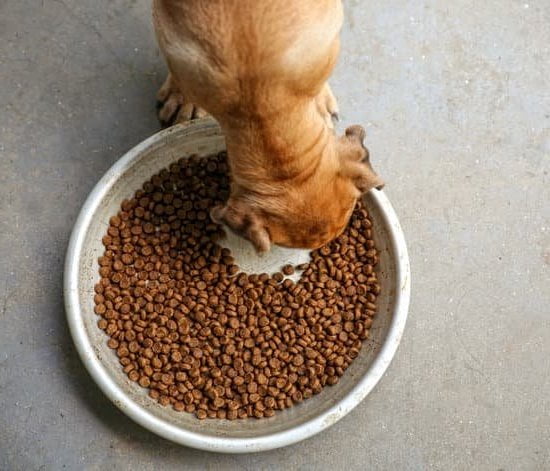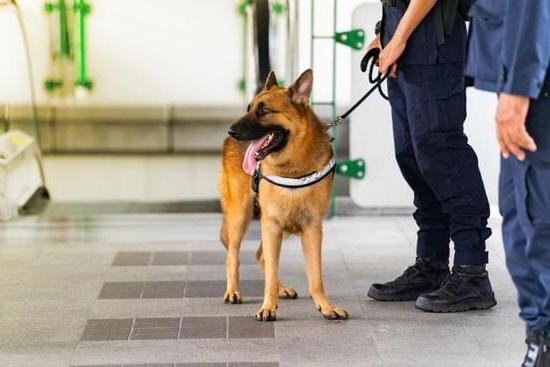Are you wondering how to crate potty train a dog? Crate training is a popular method for potty training dogs and can be an effective way to teach your furry friend where to do their business. In this article, we will explore the benefits of crate training for potty training, as well as provide tips and techniques for successfully implementing this method with your dog.
When it comes to potty training, using a crate can provide a safe and comfortable space for your dog, while also helping to establish a routine and set boundaries. In this introductory section, we will delve into the advantages of using a crate for potty training and why it is an effective strategy for many dog owners.
As we dive deeper into the topic, we will discuss important considerations when selecting the right crate for your dog, such as size, material, and features to ensure that your furry companion has a positive experience with their new space. We will also provide guidance on how to introduce your dog to the crate in a way that makes it a welcoming and enjoyable environment for them.
Additionally, we will cover setting a potty training schedule, using positive reinforcement techniques, handling accidents, and transitioning your dog from crate potty training to having more freedom in the house.
By the end of this article, you’ll have all the information you need to successfully implement crate potty training with your dog and set them up for success in their potty training journey.
Selecting the Right Crate for Your Dog
When it comes to crate potty training your dog, selecting the right crate is crucial for a successful process. The size of the crate is important because it should be large enough for your dog to stand up, turn around, and lie down comfortably, but not so large that they can designate a space within it for pottying.
Measure your dog from their nose to the base of their tail and add a few inches to determine the appropriate length of the crate.
In terms of material, there are different options available including wire crates, plastic crates, and even collapsible fabric crates. Each type has its own advantages and disadvantages. Wire crates are often sturdy and allow for good ventilation, while plastic crates provide a more den-like environment that some dogs prefer. Collapsible fabric crates are lightweight and easy to transport but may not be as durable. Consider your dog’s behavior and needs when choosing the material.
Features to consider when selecting a crate include whether it has a removable tray for easy cleaning, if it has double doors for added accessibility, or if it comes with dividers to adjust the size of the interior as your puppy grows. Taking these factors into account will help you choose a crate that suits both you and your dog’s needs during the potty training process.
| Criteria | Considerations |
|---|---|
| Size | Appropriate length for dog’s comfort |
| Material | Wire, plastic or collapsible fabric |
| Features | Removable tray, double doors, dividers |
Introducing Your Dog to the Crate
When it comes to crate potty training, introducing your dog to the crate is an essential step in the process. The goal is to make the crate a positive and comfortable space that your dog willingly goes into. Here are some tips for making this transition as smooth as possible:
1. **Start Slowly**: Introduce the crate gradually, allowing your dog to explore it at their own pace. Place treats or their favorite toys inside the crate to entice them to go in.
2. **Create a Positive Association**: Associate positive experiences with the crate by feeding your dog near and then eventually inside the crate. This will help them view it as a safe and enjoyable space.
3. **Use Comfort Items**: Make the crate cozy by adding soft bedding or blankets. Dogs are more likely to enjoy spending time in their crates if they are comfortable.
It’s important to be patient during this process, as some dogs may take longer than others to adjust to being crated. By taking the time to create a positive association with the crate, you’ll set your dog up for success in their potty training journey.
Setting a Potty Training Schedule
Frequency of Bathroom Breaks
When it comes to setting a potty training schedule for your dog, it’s crucial to understand the frequency at which your dog needs to go outside. Puppies, for example, may need to relieve themselves as often as every 30-60 minutes during the day, while adult dogs can typically hold it for longer periods of time.
Pay attention to your dog’s behavior and look for signs that they need to go out, such as pacing, sniffing around, or whining.
Using the Crate Effectively
The crate can be a valuable tool in potty training your dog, especially when you’re unable to supervise them closely. When you’re not able to actively watch your dog and take them outside as needed, placing them in their crate can prevent accidents indoors.
Utilize the crate during times when you can’t keep an eye on your dog or during periods when they are most likely to need a bathroom break, such as first thing in the morning and shortly after meals.
Nighttime Considerations
At night, it’s important to establish a schedule that prevents accidents while also ensuring that your dog is comfortable. In general, puppies can only hold their bladders for a few hours at a time, so be prepared for nighttime potty breaks.
Placing the crate in or near your bedroom can make it easier for you to hear if your dog needs to go out during the night. Gradually extend the time between nighttime bathroom breaks as your puppy gets older and their bladder capacity increases.
Using Positive Reinforcement
When it comes to crate potty training your dog, using positive reinforcement is a key element in ensuring success. By utilizing reward-based training techniques, you can encourage your dog to associate the crate with a positive experience, ultimately leading to effective potty training.
Choosing the Right Rewards
One of the first steps in using positive reinforcement for crate potty training is selecting the right rewards for your dog. This could include small treats, verbal praise, or a favorite toy. It’s important to figure out what motivates your dog and use that as a reward for good behavior in and around the crate.
Consistency Is Key
Consistency is crucial when employing positive reinforcement techniques. Whenever your dog exhibits the desired behavior, such as going potty outside or entering the crate willingly, make sure to immediately reward them. This will help them understand what actions lead to a positive outcome and encourage them to repeat those behaviors in the future.
Patience and Persistence
Positive reinforcement requires patience and persistence. It may take time for your dog to fully grasp the concept of crate potty training, so it’s essential to remain consistent with rewarding good behavior. Additionally, be prepared for setbacks and continue using positive reinforcement techniques to guide your dog in the right direction.
By using positive reinforcement methods such as choosing the right rewards, being consistent, and practicing patience and persistence, you can effectively train your dog to use the crate for potty training purposes. These techniques create an environment where your dog feels encouraged and motivated to exhibit the desired behaviors, leading to successful crate potty training.
Dealing With Accidents
Accidents are an inevitable part of the crate potty training process, especially in the early stages. It’s important to understand that setbacks are normal and not a reflection of your dog’s ability to learn. When accidents do happen, it’s essential to remain patient and consistent in your approach. Avoid punishing your dog for accidents as this can create negative associations with the crate and set back your progress.
When accidents occur, it’s crucial to clean the crate thoroughly to remove any lingering odors that may attract your dog back to that spot. Use an enzymatic cleaner specifically designed for pet stains and odors, as these products are effective at breaking down the organic compounds in urine and feces. Be sure to follow the instructions on the product label for best results.
In addition to cleaning the crate, it’s important to reassess your potty training schedule and make any necessary adjustments. If accidents are happening frequently, you may need to take your dog out more often or provide more opportunities for bathroom breaks. Consistency is key, so stick to a routine and be vigilant in supervising your dog during the crate potty training process.
| Dealing With Accidents | Cleaning Tips |
|---|---|
| Accidents are normal | Use enzymatic cleaner |
| Avoid punishment | Reassess potty training schedule |
Gradual Freedom
After successfully crate potty training your dog, it’s important to gradually transition them to being free in the house. This process will help your dog understand that they no longer need to eliminate in the crate and can do so outside the house. Here are some tips for a smooth transition:
- Start by slowly increasing the amount of time your dog spends outside the crate. Begin with short periods and gradually extend the time as your dog demonstrates their ability to hold their bladder.
- Supervise your dog closely during this transition period to prevent accidents. Keep a close eye on their behavior and take them outside when you notice signs that they need to go potty.
- Use positive reinforcement to encourage appropriate behavior. When your dog eliminates outside, praise and reward them with treats or verbal praise. This will reinforce the idea that going potty outside is what you expect from them.
It’s important to be patient during this transition phase, as some dogs may take longer to adjust than others. Consistency is key, so continue following the potty training schedule you established during crate training. By gradually giving your dog more freedom in the house and positively reinforcing good behavior, you can successfully transition them from crate potty training to being free in the house.
For additional guidance on this phase of potty training, consulting with a professional dog trainer can be helpful. They can provide personalized advice based on your dog’s specific needs and behavior patterns.
Additional Tips and Resources
In conclusion, crate potty training can be a highly effective method for teaching your dog good bathroom habits. By understanding the benefits of crate training and selecting the right crate for your dog, you can set the stage for successful potty training. Introducing your dog to the crate in a positive way, setting a potty training schedule, and using positive reinforcement are all key components of this training method.
It’s important to remember that accidents will happen during the potty training process, but it’s essential to handle them calmly and clean the crate properly to prevent future accidents. Gradual freedom is also crucial – once your dog has mastered crate potty training, it’s important to slowly transition them to being free in the house while still maintaining good bathroom habits.
For additional tips and resources, seek expert advice from professional trainers or veterinarians who can provide personalized guidance for your specific dog. There are also recommended products such as specific types of crates or cleaning supplies that can aid in successful crate potty training.
Further reading on this topic can provide you with in-depth knowledge and strategies for effectively training your dog in using a crate for potty purposes. With dedication and patience, you can successfully crate potty train your dog and enjoy a well-behaved pet.
Frequently Asked Questions
Does Crating a Dog Help With Potty Training?
Crating a dog can be helpful for potty training as it helps to establish a routine and limit the dog’s access to the rest of the house where accidents could occur. It also teaches the dog to hold their bladder and gives them a designated space for sleeping and relaxing.
How Long Do You Leave a Dog in a Crate for Potty Training?
The length of time a dog should be left in a crate for potty training varies based on the dog’s age, size, and breed. Generally, puppies can only hold their bladder for as many hours as they are months old, plus one (e.g.
a 2-month-old puppy can hold it for 3 hours). Adult dogs can typically hold it for 6-8 hours.
How Big Should a Dog Crate Be When Potty Training?
A dog crate when potty training should be large enough for the dog to stand up, turn around, and lie down comfortably. However, it should not be too big because dogs are less likely to urinate or defecate in an area where they sleep or rest.
The crate should have enough space for the dog to stretch out but not so much that it becomes an indoor bathroom area.

Welcome to the blog! I am a professional dog trainer and have been working with dogs for many years. In this blog, I will be discussing various topics related to dog training, including tips, tricks, and advice. I hope you find this information helpful and informative. Thanks for reading!





